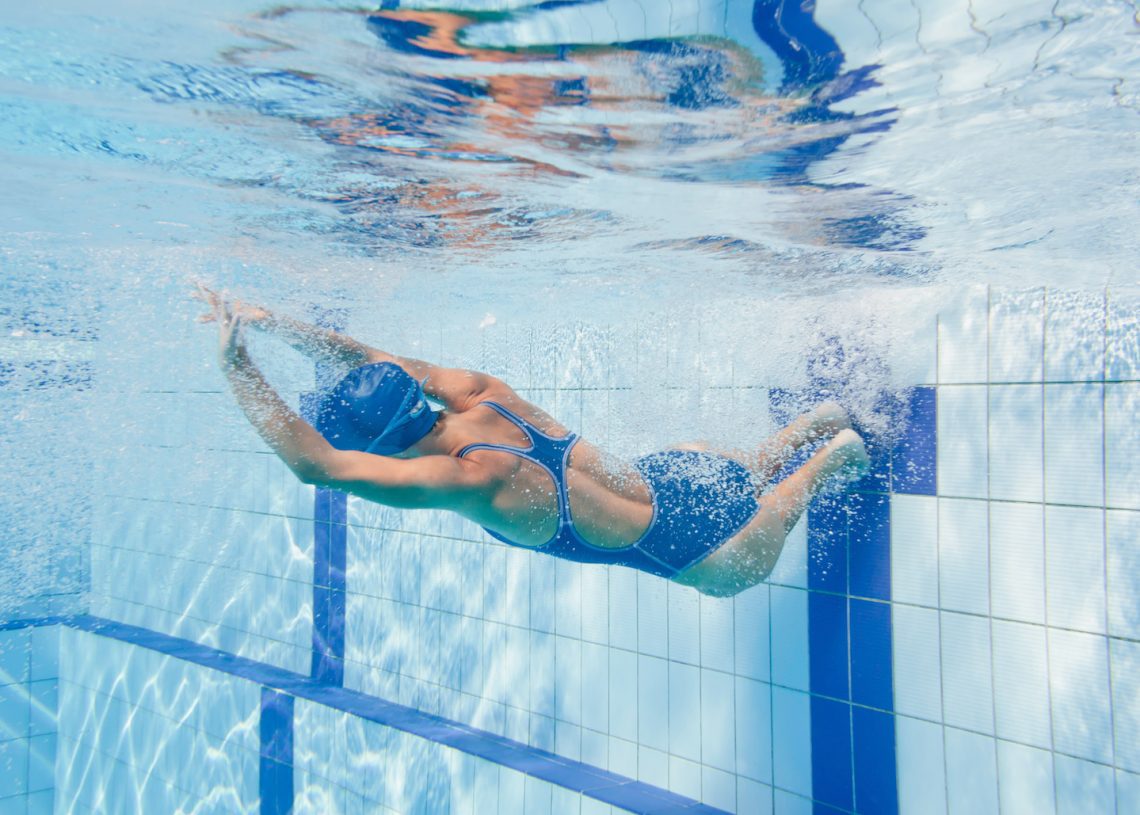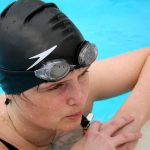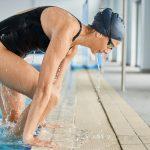
Practise pool turns to improve your outdoor swimming
Simon Griffiths explains how practising turns in the pool can help add strength and conditioning training to your open water swimming
Many recreational outdoor swimmers barely use their legs on front crawl, especially if they’re supported by a wetsuit. For most of us, it’s an efficient way to swim. Your legs have big muscles. Using them demands a lot of oxygen and fuel. Unless your kick is super effective, it’s better to save that for your arms and shoulders.
But we shouldn’t neglect our legs.
One reason some swimmers struggle to get faster is a lack of overall physical conditioning.
If you only swim long distance front crawl in open water, you may build good aerobic fitness but some muscle groups will be underused.
A simple way to use more muscles is to do some of your training in a pool.
As an outdoor swimmer, you may feel constrained in a pool. Those turns every 25m are a nuisance. They disturb the rhythm of your stroke and disrupt your breathing pattern. You want to break free.
But instead of seeing those turns as a necessary evil of pool swimming, try
thinking about them as an additional training opportunity – specifically, a way
to add some strength and conditioning training to your swim.
If you think about it, every turn is a chance to do something resembling a jump squat, which works a range of muscles you could be neglecting if you only swim in open water.
While these muscles don’t help propel you through the water, they contribute towards a stronger and more stable core, which is a factor in faster swimming. This happens regardless of how you do your turns but by focussing on them, you could reap bigger benefits. Here are some things to think about.
Touch turns
- As your hand touches the wall, pull your knees towards your chest, as if you’re doing a crunch. The tighter you contract, the faster you’ll spin.
- Twist to plant your feet on the wall. If you’re swimming front crawl, your trailing arm should now be pointing the way you want to swim. If you’re doing butterfly or breaststroke and have touched the wall with both hands, swing one arm through the water to point back down the pool.
- Before pushing off the wall, swing your second hand off the wall over the water and lock it onto the other hand. Allow yourself to sink slightly and ensure your head is squeezed between your arms in a streamline position.
- Now power off the wall by straightening your legs, finishing the movement with a calf extension for a final spring. Hold the streamline until you slow down to swimming speed.
Tumble turns
- Pull yourself into a tight tuck as you make the turn.
- Flip directly onto your back so that your land in a sort of horizontal squat position, feet parallel about shoulder width apart, toes pointing to the ceiling.
- As you’re spinning, move your hands into a streamline position pointing back down the pool.
- Once your arms are fixed, explode off the wall, still on your back. Rotate onto your front while gliding.
- To get the most benefit, work those turns. Don’t just flop off the wall. Initially it might feel like hard work but stick with it both for your overall fitness and to swim faster.
For more on turns see last month’s article on underwater dolphin kicking.
To see all the online content from the May 2023 issue of Outdoor Swimmer, visit the 'Spring(s)' page.







